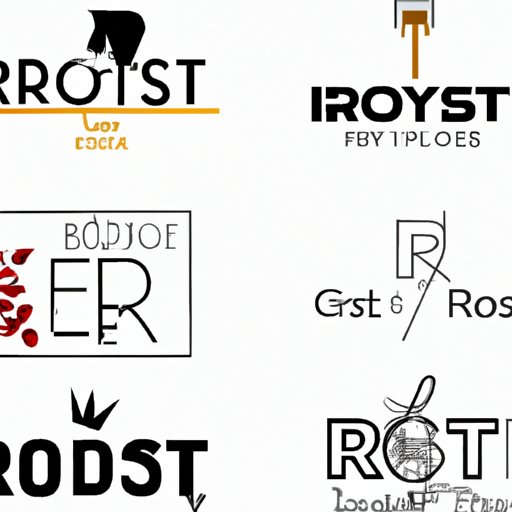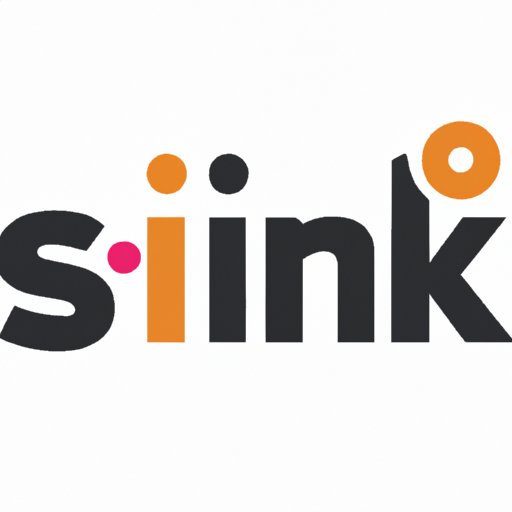
Introduction
Logos are a vital part of any successful business, serving as the visual representation of a brand. In today’s competitive marketplace, it’s essential to stand out and make an instant connection with potential customers. A strong logo can help a business achieve this by communicating its values and personality in a memorable, eye-catching way. In this article, we’ll explore how to make a logo that successfully captures your brand and resonates with customers.
The Importance of a Strong Logo and How to Design One
A strong logo can help a business establish a memorable visual identity, making it easier for potential customers to identify and remember the brand. A successful logo design should be simple, distinct, and versatile. It should also be able to work across different mediums, such as print and online.
When designing a logo, it’s important to consider the key elements that make up a successful design, including color, typography, and imagery. Color can evoke emotions and help a brand stand out, while typography can communicate its tone and personality. Imagery can also be used to convey a brand’s values and beliefs.
Some examples of successful logos include Nike, Coca-Cola, and Apple. These logos are simple, yet memorable and have become iconic staples of their respective industries. Nike’s “swoosh” logo is simple and recognizable, while Coca-Cola’s logotype has remained virtually unchanged for over a century.

Designing a Logo: Tips and Tricks for Beginners
Designing a logo can feel like a daunting task, especially for beginners without any design experience. However, there are tips and tricks that can help make the process more approachable.
One tip is to start the design process by sketching ideas on paper. This can help form a basic concept and allow for more exploration before moving onto digital design software. Another tip is to focus on creating a unique and memorable logo that stands out from competitors. This can be achieved by using unexpected color combinations, incorporating clever design elements, or experimenting with typography.
When choosing a color scheme and typography for a logo, it’s important to consider the business’s values, industry, and target audience. For example, a tech company may choose a modern sans-serif font, while a bakery may opt for a more decorative script font. Color can also play a role in communicating a brand’s identity and should be chosen carefully. For example, blue can communicate professionalism and stability, while red can evoke energy and excitement.
7 Simple Steps to Create a Memorable Logo for Your Brand
Creating a memorable logo can be broken down into seven simple steps:
- Define your brand’s identity and personality
- Simplify your design concept
- Choose your color scheme and typography
- Create a basic design using digital software
- Experiment with different variations
- Refine your design and seek feedback
- Deliver your final logo in multiple file formats
When designing a logo, it’s important to keep the design consistent and reflective of the business’s overall brand personality. Seeking feedback from colleagues, friends, or even a professional designer can also be helpful in refining the design.
From Concept to Completion: The Logo Design Process Explained
The logo design process can be broken down into five stages:
- Research
- Brainstorming
- Sketching
- Refining
- Delivery
The research stage involves understanding the brand, its target audience, and its competition. Brainstorming involves generating ideas for the logo and selecting a concept to move forward with. Sketching involves creating rough sketches of the design concept, while refining involves creating a more polished version of the design. Finally, delivery involves exporting the design in multiple file formats and delivering the final logo.
Logo Design: A Comprehensive Guide for Small Business Owners
Small business owners may not have the budget to hire a professional designer, but DIY logos can still look professional and be effective. Some tips for creating a professional-looking logo include keeping it simple, using high-quality images, and choosing a font that is easy to read. Cost-effective ways to design a professional logo include using online design tools or even designing the logo yourself using free design software.
How to Create a Professional Logo That Stands Out
When creating a professional logo, it’s important to ensure that it is versatile and scalable so that it can be used across different mediums and sizes. Choosing the right file format is also important in ensuring that the logo remains high quality. A vector format such as SVG or AI is preferred as it can be scaled up or down without losing quality.
DIY Logo Design: Cost-Effective Ways to Create Your Own Logo
Creating a DIY logo has its pros and cons. While it can be cost-effective and offer more creative control, it may not be as polished or professional-looking as a logo created by a professional designer. Online design tools such as Canva and Designhill offer a range of templates and design elements that can be used to create professional-looking logos. Free design software such as Inkscape or Gimp can also be used to create vector-based logos.
Conclusion
A strong logo can help a business establish credibility, recognition, and ultimately, success. By following the tips and tricks outlined in this guide, business owners can design a unique and memorable logo that resonates with customers. Whether creating a logo on your own or working with a professional designer, the right logo can serve as the foundation for a strong brand identity.
Additional resources for further reading on logo design and branding can be found at sites such as Creative Market, 99Designs, and Behance.





